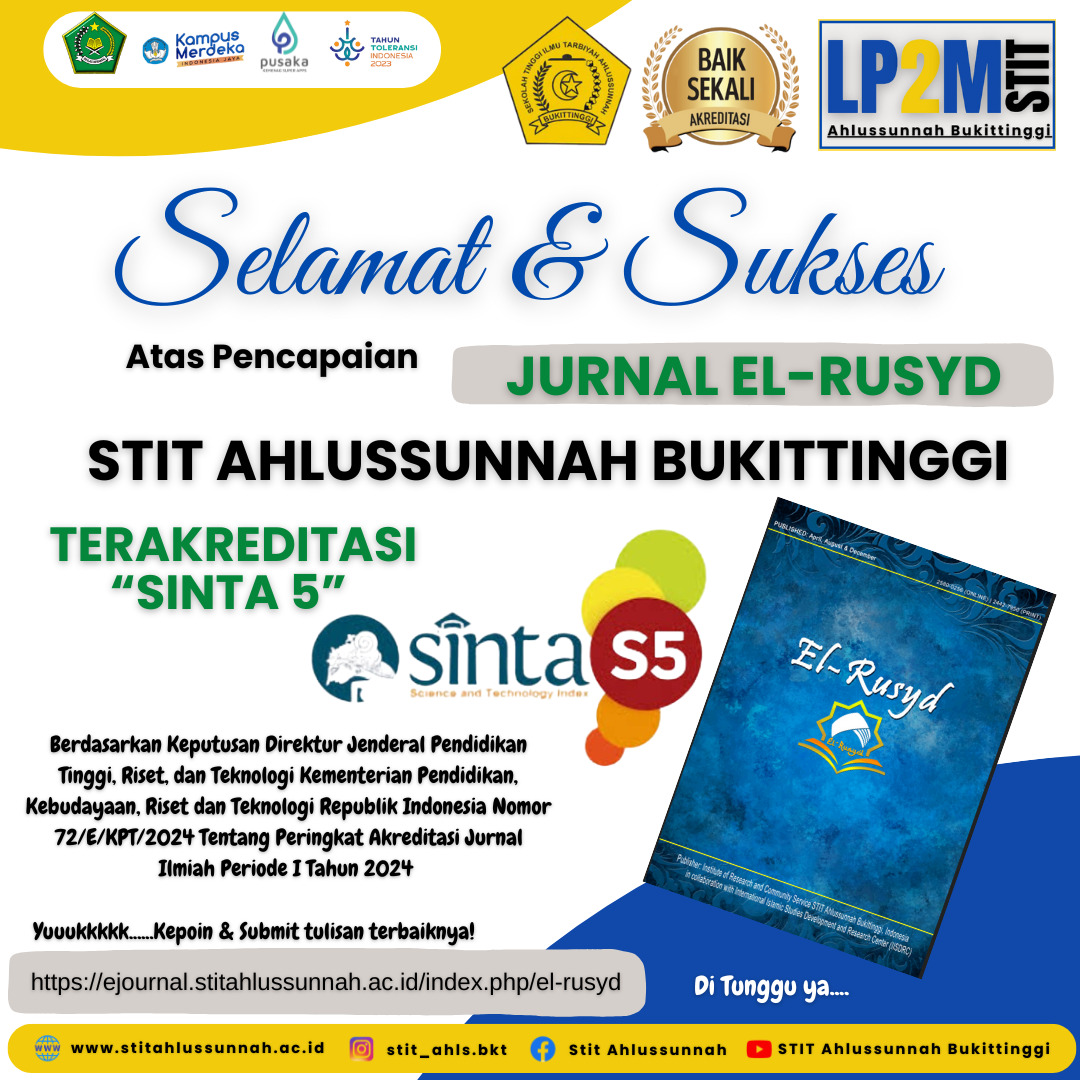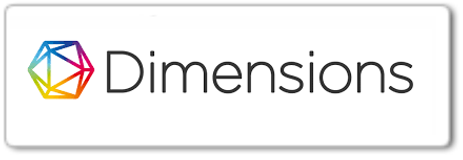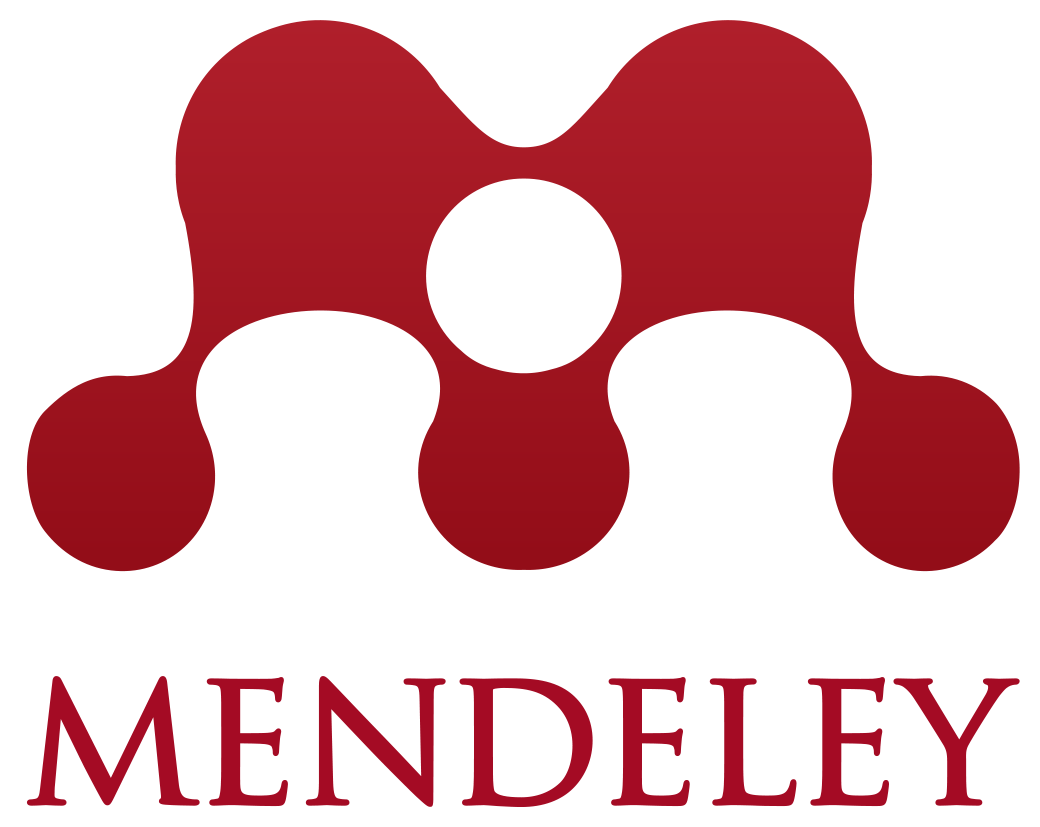Implementation Of curriculum Needs Analysis In Junior High School
DOI:
https://doi.org/10.58485/elrusyd.v10i1.312Keywords:
Needs analysis, curriculum, Junior High SchoolAbstract
The implementation of curriculum needs analysis at the junior high school (SMP) level is a very important step to ensure that the learning process taking place in schools is truly in line with developments in science and technology. Not only that, this analysis is also key to ensuring that learning is able to respond to the real needs of students and the community, as well as keeping up with the demands of the ever-changing world of education and industry. This research was conducted as part of these efforts, using a combination of library research and field surveys. Library research was conducted to explore various theoretical references and previous studies, while field surveys were carried out through the distribution of questionnaires and interviews with students and teachers at SMP Negeri 2 Kamang Magek. Additionally, data was collected through direct observation in the school environment and an analysis of documents related to the curriculum used. The main focus of this research is to identify the gap between the ideal curriculum and the curriculum that has been implemented in schools. In other words, this research aims to determine the extent to which the existing curriculum can meet the needs of students and the demands of the times, while also identifying priorities in curriculum development to make it more flexible, contextual, and adaptive. The results of the data analysis indicate that the current curriculum still has several weaknesses that need to be addressed. Key areas requiring attention include curriculum flexibility, the integration of character values, and the alignment of instructional materials with the characteristics and needs of students. A rigid and irrelevant curriculum can hinder effective and meaningful learning processes. Therefore, this study recommends the development of a more adaptive and contextual curriculum, as well as one that is oriented towards strengthening 21st-century skills, such as critical thinking, creativity, communication, and collaboration. Equally important, the integration of Islamic values into the curriculum needs to be continuously strengthened as part of efforts to build the character, morals, and spirituality of students. Some concrete steps recommended include adjusting the content of learning to better suit the character and potential of students, strengthening local content that can enrich the learning experience, improving teacher competence, and developing a flexible and dynamic curriculum. Thus, curriculum needs analysis is not merely an academic study but also a crucial foundation for creating a more quality, relevant, and effective education system that can better prepare the younger generation to face future challenges.
References
Adel, S., Athari, Z., Febriani, A., Oktavia, G. ., & Burhanudin, B. (2025). The Qur’an as a Source of Solutions for the Global Moral Crisis. Journal of Quranic Teaching and Learning, 1(2), 18-33. https://joqer.intischolar.id/index.php/joqer/article/view/10
Amin, I., Latif, A., Shiddiq, J., Hidayat, A. F. S., & Mahdi, R. (2022). Student Perception of the Development of Arabic Learning Model in Intensive Learning Program at IAIN Padangsidimpuan Language Development Center. Lisanan Arabiya: Jurnal Pendidikan Bahasa Arab, 6(1), 69–86.
Aryanti, Y., Mutathahirin, M., Rahman, I., & Mulyani, R. (2022). Teacher Analysis Study According to Imam Al Ghazali in the Book of Al Adab Fi Al-Din. Ahlussunnah: Journal of Islamic Education, 1(2), 46-58. https://doi.org/10.58485/jie.v1i2.177
Astuti, R., Kartawinata, B. R., Nurhayati, E., Tuhuteru, J., Mulatsih, L. S., Muliyani, A., Siska, A. J., Erziaty, R., Wicaksono, G., & Nurmatias, N. (2022). Manajemen keuangan perusahaan.
Badriah, L., & Sholicha, R. A. (2017). Hubungan Kreativitas Guru dan Lingkungan Belajar terhadap Keaktifan Siswa Kelas III MIN Jejeran Bantul Tahun Ajaran 2015/2016. Literasi: Jurnal Ilmu Pendidikan, 7(1), 34–47.
Dasrizal, D., Rambe, K. F., Sihombing, C. D., Khalid, E., & Safitri, D. A. (2025). Distortion of Quranic Interpretation on Socialmedia: An Analysis of the Spread of Misleading Meanings. Journal of Quranic Teaching and Learning, 1(2), 65-82. https://joqer.intischolar.id/index.php/joqer/article/view/8
Efendi, E., Ramadhani, R., Kamil, R. A., & Rahman, I. (2022). The Effect Of Building The Islamic Character Of Students At Wisma Padang State University. Jurnal Kepemimpinan dan Pengurusan Sekolah, 7(3), 271-280. https://doi.org/10.34125/jkps.v7i3
Engkizar, E., Jaafar, A., Alias, M. F. B., Guspita, R., & Albizar, A. (2025). Utilisation of Artificial Intelligence in Quranic Learning: Innovation or Threat?. Journal of Quranic Teaching and Learning, 1(2), 1-17. https://joqer.intischolar.id/index.php/joqer/article/view/7
Engkizar, E., Jaafar, A., Masuwd, M. A., Rahman, I., Datres, D., Taufan, M., Akmal, F., Dasrizal, D., Oktavia, G., Yusrial, Y., & Febriani, A. (2025). Challenges and Steps in Living Quran and Hadith Research: An Introduction. International Journal of Multidisciplinary Research of Higher Education (IJMURHICA), 8(3), 426–435. https://doi.org/10.24036/ijmurhica.v8i3.396
Engkizar, E., Jaafar, A., Sarianto, D., Ayad, N., Rahman, A., Febriani, A., ... & Rahman, I. (2024). Analysis of Quran Education Problems in Majority Muslim Countries. International Journal of Islamic Studies Higher Education, 3(1), 65-80. https://doi.org/10.24036/insight.v3i1.209
Engkizar, E., Jaafar, A., Taufan, M., Rahman, I., Oktavia, G., & Guspita, R. (2023). Quran Teacher: Future Profession or Devotion to the Ummah?. International Journal of Multidisciplinary Research of Higher Education (IJMURHICA), 6(4), 196-210. https://doi.org/10.24036/ijmurhica.v6i4.321
Engkizar, E., Muslim, H., Mulyadi, I., & Putra, Y. A. (2025). Ten Criteria for an Ideal Teacher to Memorize the Quran. Journal of Theory and Research Memorization Quran, 1(1), 26-39. https://joesmiq.intischolar.id/index.php/joesmiq/article/view/54
Hamzah, A. R. (2017). Konsep Pendidikan Dalam Islam Perspektif Ahmad Tafsir. At-Tajdid: Jurnal Pendidikan Dan Pemikiran Islam, 1(01).
Ikhwan, A. (2014). Integrasi Pendidikan Islam (Nilai-Nilai Islami dalam Pembelajaran). Ta’allum: Jurnal Pendidikan Islam, 2(2), 179–194.
Kaufman, R. A., & English, F. W. (1979). Needs assessment: Concept and application. Educational Technology.
MacNeil, H. (2002). Providing grounds for trust II: The findings of the authenticity task force of InterPARES. Archivaria, 24–58.
Marzuki, S., & Riyadi, E. (2008). Hukum hak asasi manusia. Yogyakarta: Pusat Studi Hak Asasi Manusia Universitas Islam Indonesia.
McNeil, S. (2015). Visualizing mental models: understanding cognitive change to support teaching and learning of multimedia design and development. Educational Technology Research and Development, 63, 73–96.
Menggo, S., Ndiung, S., & Midun, H. (2022). Integrating 21st-century skills in English material development: What do college students really need? Englisia: Journal of Language, Education, and Humanities, 9(2), 165–186.
Nurwahyuni, K., & Hudaidah, H. (2021). Sejarah Sistem Pendidikan di Indonesia dari Masa ke Masa. Berkala Ilmiah Pendidikan, 1(2), 53–59.
Pohan, C. A., & Adams, C. (2007). Increasing family involvement and cultural understanding through a university-school partnership. Action in Teacher Education, 29(1), 42–50.
Rahman, I., Iskandar, M. Y., Kustati, M., & Sepriyanti, N. (2024). Sustainable Development: Implementation of The Talqin Method In Memorizing The Quran. Jurnal Kepemimpinan dan Pengurusan Sekolah, 9(1), 99-108. https://doi.org/10.34125/jkps.v9i1.355
Rahman, I., Kaema, M. T., Nurhapipah, N., Nelwati, S., Sabri, A., & Rahmanda, R. (2024). Systematic Literature Review: Analysis of Project-based Learning Models from Elementary to High School. Al-Ashri: Ilmu-Ilmu Keislaman, 9(2), 53-66. https://ojs.stai-bls.ac.id/index.php/Al-Ashri/article/view/119
Rahman, I., Wati, W., Putri, N., Wulandari, R., & Habibi, U. A. (2025). Commercialization of Quranic Tahfidz Houses in Indonesia: Da’wah or Business?. Journal of Quranic Teaching and Learning, 1(2), 34-48. https://joqer.intischolar.id/index.php/joqer/article/view/6
Rasdiany, A. N., Akmal, F., Pasaleron, R., Dafrizal, D., Ningsih, R., & Rahman, I. (2024). Systematic Literature Review: The Impact of Social Competence on Teacher Communication Intelligence. Jurnal Kepemimpinan dan Pengurusan Sekolah, 9(2), 239-251. https://doi.org/10.34125/jkps.v9i2
Richards, D. K., Schwebel, F. J., Field, C. A., Pearson, M. R., & Team, A. R. (2024). The associations of basic psychological need satisfaction and need frustration with cannabis-related outcomes in a multi-site sample of college students. Journal of Psychoactive Drugs, 56(2), 177–186.
Rita Ramayulis, D. C. N. (2008). Menu dan resep untuk penderita kolesterol. Penebar PLUS+.
Utami, S. (2019). Pengaruh Motivasi Dan Pelatihan Program Kelompok Usaha Bersama Pada Pelaku Usaha Kecil Menengah Dalam Menangani Tingkat Kemiskinan Di Kecamatan Kanigaran Kota Probolinggo. Universitas Panca Marga Probolinggo.
Yaccob, N. S., Rahman, S. F. A., Mohamad, S. N. A., Rahim, A. A. A., Rashid, K. K. A., Aldaba, A. M. A., Yunus, M. M., & Hashim, H. (2022). Gamifying ESL Classrooms through Gamified Teaching and Learning. Arab World English Journal.
Yusrizal, Y., & Fatmawati, F. (2020). Analysis of Teacher Abilities in Implementing Online Learning in Elementary Schools of the North Sumatra PAB Foundation. Jurnal Ilmiah Teunuleh, 1(2), 129–137.
Zahra, F., Abdullah, M. I., Din, M., Fadli, M., Besar, H. A. H., & Ali, J. K. (2024). Investigating the Structural Model of Whistle Blowing System on Government Procurement Fraud: Examining Mediating Effect of Investigative Audit. International Journal of Economics and Financial Issues, 14(6), 302–309.











